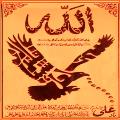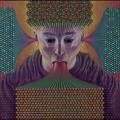
DMT-Nexus member
Posts: 2151 Joined: 23-Nov-2012 Last visit: 07-Mar-2017
|
Anyone used this? I know virola resin is said to have DMT and 5-MeO in it, but what about the bark? As anyone tried to do a crude extraction, either by boiling or by using a soxhlet, to see what comes out? Blessings ~ND "There are many paths up the same mountain."
|
|
|
|
|
DMT-Nexus member
Posts: 2889 Joined: 31-Oct-2014 Last visit: 03-Nov-2018
|
Nathanial.Dread wrote:Anyone used this? I know virola resin is said to have DMT and 5-MeO in it, but what about the bark? As anyone tried to do a crude extraction, either by boiling or by using a soxhlet, to see what comes out?
Blessings
~ND I saw some offered in a fairly mainstream vending medium, but failed to act in time, and have been regretting it ever since... ...my hesitation had to do with the fact that it was a new plant material, i have read the books, terence mckenna in "true hallucinations" was initially searching for "ee-koo-hey" , which was a Entheogenic substance produced from Virola theiodora resin, then I recall reading the schultes entry in "golden guide"*, since I have been fascinated with these plants and their resin... I figured the resin was a product of the fresh or living plants, which were stripped of their bark exposing a red resionous sap, which was collected and used as an entheogen... Though I also recall hearing of alkaloids in the bark, was was uncertain as to the quantity they were present in or how the bark could be potentially used... * Quote:VIROLAS (Virola calophylla, V. colophylloidea, and V. theiodora) are among the most recently discovered hallucinogenic plants. These jungle trees of medium size have glossy, dark green leaves with clusters of tiny yellow flowers that emit a pungent aroma. The intoxicating principles are in the blood-red resin yielded by the tree bark, which makes a powerful snuff. Virola trees are native to the New World tropics. They are members of the nutmeg family, Myristicaceae, which comprises some 300 species of trees in 18 genera. The best known member of the family is Myristica fragrans, an Asiatic tree that is the source of nutmeg and mace. In Colombia, the species most often used for hallucinogenic purposes are Virola calophylla and V. calophylloidea, whereas in Brazil and Venezuela the Indians prefer V. theiodora, which seems to yield a more potent resin. AN INTOXICATING SNUFF is prepared from the bark of Virola trees by Indians of the northwestern Amazon and the headwaters of the Orinoco. An anthropologist who observed the Yekwana Indians of Venezuela in their preparation and use of the snuff in 1909 commented: "Of special interest are cures, during which the witch doctor inhales hakudufha. This is a magical snuff used exclusively by witch doctors and prepared from the bark of a certain tree which, pounded up, is boiled in a small earthenware pot, until all the water has evaporated and a sediment remains at the bottom of the pot. "This sediment is toasted in the pot over a slight fire and is then finely powdered with the blade of a knife. Then the sorcerer blows a little of the powder through a reed . . . into the air. Next, he snuffs, whilst, with the same reed, he absorbs the powder into each nostril successively. "The hakudufha obviously has a strong stimulating effect, for immediately the witch doctor begins to sing and yell wildly, all the while pitching the upper part of his body backwards and forwards." Picture attached is: Strip of bark from Virola tree, showing oozing resin." From golden guide; schultes https://erowid.org/libra...olden_guide/g71-80.shtml I'm still very curious and would appreciate any information in this area. -eg entheogenic-gnosis attached the following image(s):  g076.jpg (21kb) downloaded 352 time(s).
|
|
|

Dreamoar

Posts: 4711 Joined: 10-Sep-2009 Last visit: 06-Nov-2025 Location: Rocky mountain high
|
This may be of interest: Agurell, Stig, et al. "Alkaloids in certain species of Virola and other South American plants of ethnopharmacologic interest." Acta chemíca scandinavíca 23.3 (1969): 903-916. Quote:Virola theiodora, a botanical source of intoxication snuffs used by certain South America Indian tribes, has been shown to contain the hallucinogen 5-methoxy-N,N-dimethyltryptamine as well as a number of other indoles. One Indian snuff proved to be unusually high in alkaloid content (11%). Considerable differences in the alkaloid composition of different parts of single plants were encountered, N,N-dimethyltryptamine being the major component in the leaves and 5-methoxy-N,N-dimethyltryptamine in the bark of Virola theiodora. Of other species of Virola investigated V. rufula contained substantial amounts of tryptamines, whereas V. multinervia and V. venosa were almost devoid of alkaloids. V. calophylla contained high amounts of alkaloids only in the leaves. Two new β-carbolines of a type carrying the substituents in the 6-position of the β-carboline nucleus were found in V.theiodora, V. rufula, and Anadenanthera (Piptadenia) peregrina. By spectrometric and other data their structures have been shown to be 2-methyl-6-methoxy-1,2,3,4-tetrahydro-β-carboline and 1,2-dimethyl-6-methoxy-1,2,3,4-tetrahydro-β-carboline.
|
|
|

DMT-Nexus member
Posts: 2151 Joined: 23-Nov-2012 Last visit: 07-Mar-2017
|
Thanks dreamer, that's the best abstract I've seen in a long time  It may be time to get some kitchen chemistry under way. Blessings ~ND "There are many paths up the same mountain."
|
|
|
DMT-Nexus member
Posts: 2889 Joined: 31-Oct-2014 Last visit: 03-Nov-2018
|
Thank you dreamer, this was exactly the type of information I was seeking. Was the snuff which contained 11% alkaloids prepared from plant material or resin? This was incredibly helpful: Quote:N,N-dimethyltryptamine being the major component in the leaves and 5-methoxy-N,N-dimethyltryptamine in the bark of Virola theiodora. Of other species of Virola investigated V. rufula contained substantial amounts of tryptamines, whereas V. multinervia and V. venosa were almost devoid of alkaloids. V. calophylla contained high amounts of alkaloids only in the leaves. Two new β-carbolines of a type carrying the substituents in the 6-position of the β-carboline nucleus were found in V.theiodora, V. rufula, and Anadenanthera (Piptadenia) peregrina. By spectrometric and other data their structures have been shown to be 2-methyl-6-methoxy-1,2,3,4-tetrahydro-β-carboline and 1,2-dimethyl-6-methoxy-1,2,3,4-tetrahydro-β-carboline. ...Though I wish the alkaloid content was quantified.
I have heard stories of the blood red resin from Virola theiodora being used in the Amazon as a poison on the end of darts used to hunt small animals... terence mckenna, in his book "true hallucinations" describes one of his obstacles to obtaining the "ee-koo-hey" (Virola theiodora resin) was that it was used in a homicide just before his visit: Quote:That afternoon a young Witoto named Basilio came to the ca-sita and, having heard of
our interest from the priest, offered to take us to see his father, a shaman with a local
reputation. Basilio assumed we were interested in ayahuasca, the better-known
hallucinogen in the area, which is generally available for the asking.
The oo-koo-he was a much more sensitive subject. There had been a murder at La
Chorrera a month or two before we arrived — actually several murders — and Guzman
claimed they all had to do with oo-koo-he. Supposedly a shaman had murdered one of
two shaman brothers by painting the top rung of a ladder with a DMT-containing resin.
When the victim grabbed the rung, the resin had absorbed through his fingers and he had
gotten vertigo and fallen, breaking his neck. The shaman whose brother had been killed
struck back by causing an accident. The alleged murderer's wife, daughter, and
grandchild had been in a canoe above the chorro and, unaccountably unable to reach the
shore, they had been swept over it. It was generally assumed that they were victims of
magic. Only the wife had lived through it. It was not the time to be poking around asking
about oo-koo-he. -terence mckenna; true hallucinations This interested me because it suggests transdermal administration, which is very curious... Claimed oral activity of the Virola theiodora resin also interested me: Quote:
we learned that the oo-koo-he was always made with the ash of other trees mixed into the
DMT-containing resin. We felt that these additional ingredients must be the key to its
oral activity, since normally DMT would be destroyed by enzymes in the large intestine.
Dennis was determined that we make a firm botanical identification of the "secret
activators." Ideally we hoped to be the first to get good collections of these plants. It
would be our small contribution to Amazonian ethnobotany.-TM; true hallucinations
Schultes paper that mckenna is referring is attached to this post. Quote:Abstract Quijos Quichua collaborators identifiedOsteophloeum platyspermum and Virola duckei (Myristicaceae) as sources of a psychoactive sap. This is the first reported hallucinogenic use of Myristicaceae from Ecuador. Species in Malpighiaceae and Solanaceae are more common sources of hallucinogens, but older Quichua still employ these myristicaceous species.Virola is used widely as a hallucinogen in other parts of Amazonia but there are no previous reports on the psychoactive use ofO. platyspermum. Field tests for the presence of alkaloids using Dragendorffs reagent were positive for both species. Like the Bora and Witoto in Peru, the Quijos Quichua consume myristicaceous hallucinogens orally. Most other indigenous peoples prepare psychoactive snuffs from the bark and sap. http://link.springer.com...ticle/10.1007/BF02908205 More information regarding oral consumption and plant admixture (above)
I could not get the download to work, but I'm seeking out the full article elsewhere. The resin itself has always been my interest, however knowing the plant matter can be potentially used as an entheogen is interesting as well... The resin is a product of the live or fresh plant, correct? -eg entheogenic-gnosis attached the following image(s):  7465880-normal.jpg (77kb) downloaded 304 time(s). 7465881-normal.jpg (83kb) downloaded 305 time(s). 7465883-normal-1.jpg (82kb) downloaded 302 time(s). 7465884-normal-1.jpg (82kb) downloaded 300 time(s). 7465885-normal.jpg (78kb) downloaded 302 time(s). 7465887-normal.jpg (81kb) downloaded 301 time(s). 7465888-normal-1.jpg (91kb) downloaded 302 time(s). 7465889-normal-1.jpg (46kb) downloaded 302 time(s).
|
|
|

Dreamoar

Posts: 4711 Joined: 10-Sep-2009 Last visit: 06-Nov-2025 Location: Rocky mountain high
|
Quote:Was the snuff which contained 11% alkaloids prepared from plant material or resin? The 11% snuff was from the resin of Virola theiodora. It consisted of mainly 5-MeO-DMT (88%), with a bit of DMT (11%), and traces of other alks (NMT, 5-MeO-NMT, 6-MeO-THC). Quote:Though I wish the alkaloid content was quantified. I've attached photos of the relevant table to this post, as well as embedded below: *sorry for the large size Quote:I could not get the download to work, but I'm seeking out the full article elsewhere. I'm surprised the attachment on the previous post didn't work. Here is an offsite link that is good for the next 24 hours. Quote:The resin is a product of the live or fresh plant, correct? Correct. dreamer042 attached the following image(s):  doia.png (238kb) downloaded 289 time(s). doia2.png (277kb) downloaded 291 time(s).
|
|
|

DMT-Nexus member
Posts: 2151 Joined: 23-Nov-2012 Last visit: 07-Mar-2017
|
Based on that, it sounds like putting some v. theiodora in a Soxhlet with something like EtOH should be a pretty viable first step to a 5-MeO extraction. I remember 69ron saying that mild acids and bases were key and that, DCM was the only solvent that worked, but I'm not sure how much I buy that. Looking at it, EtOH should work just fine. Blessings ~ND "There are many paths up the same mountain."
|
|
|

DMT-Nexus member
Posts: 1263 Joined: 01-Jun-2014 Last visit: 10-Aug-2019
|
Quote:Quote:Was the snuff which contained 11% alkaloids prepared from plant material or resin? The 11% snuff was from the resin of Virola theiodora. It consisted of mainly 5-MeO-DMT (88%), with a bit of DMT (11%), and traces of other alks (NMT, 5-MeO-NMT, 6-MeO-THC). 11% with 88% 5-MeO in it sounds moar loike an arrow poison to make monkey drop outta trees.  Perhaps some tribesmen where having fun with those researchers: Yesss -- our original snuff: Here have some!  How does virola surinamensis tree sap differ from v. calophylla and v. theiodora sap? Anyboday know it's 5-MeO to DMT / other ratio (if any)?
|
|
|
DMT-Nexus member
Posts: 2889 Joined: 31-Oct-2014 Last visit: 03-Nov-2018
|
Thanks again dreamer! I appreciate it.
-eg
|
|
|

DMT-Nexus member

Posts: 2096 Joined: 20-Nov-2009 Last visit: 12-Nov-2023
|
Am attempting a crude 96% ethanol extraction, on Virola Theiodora inner bark powder. Smell like tea n,n spirit !
Toke the toke, and walk the walk !
|